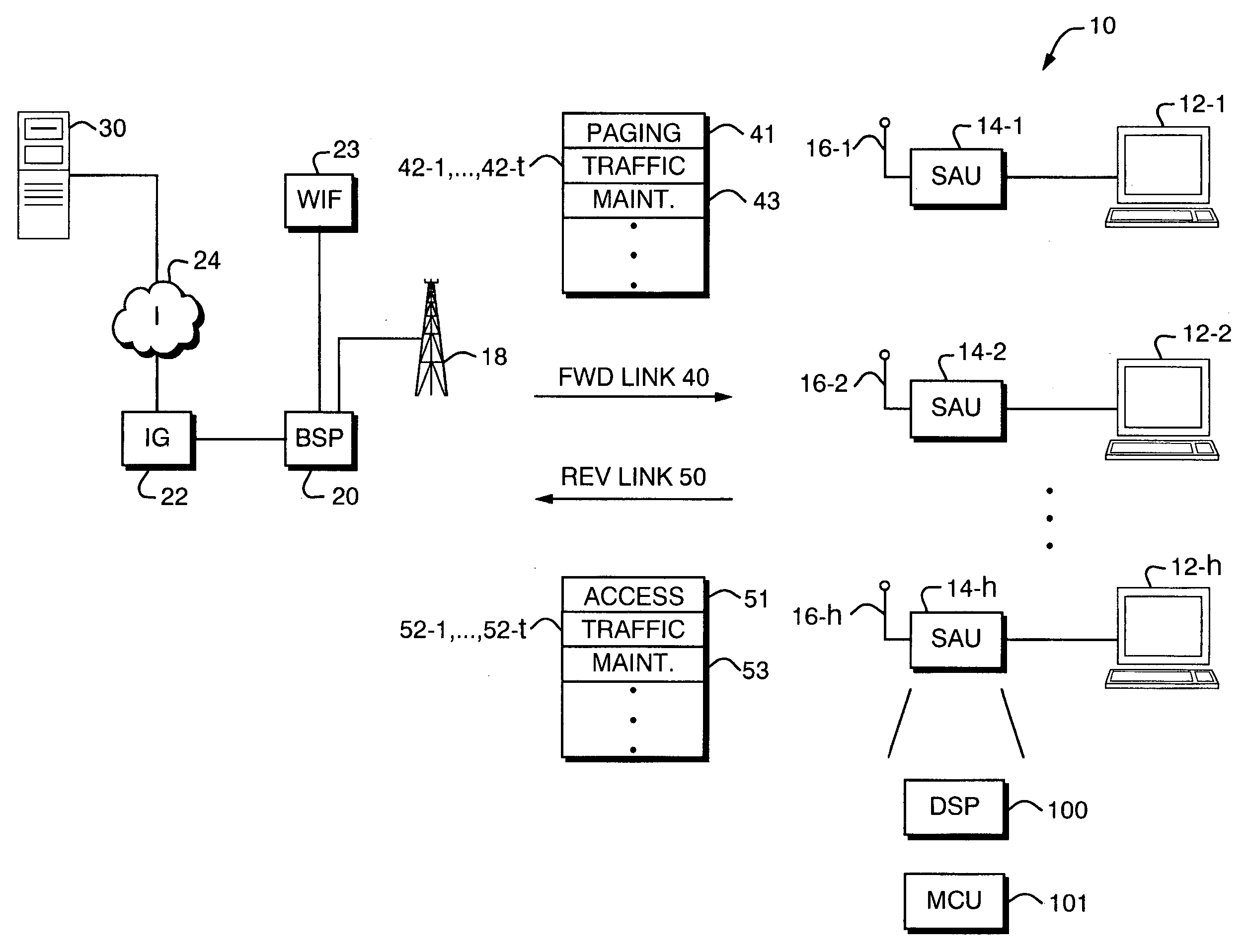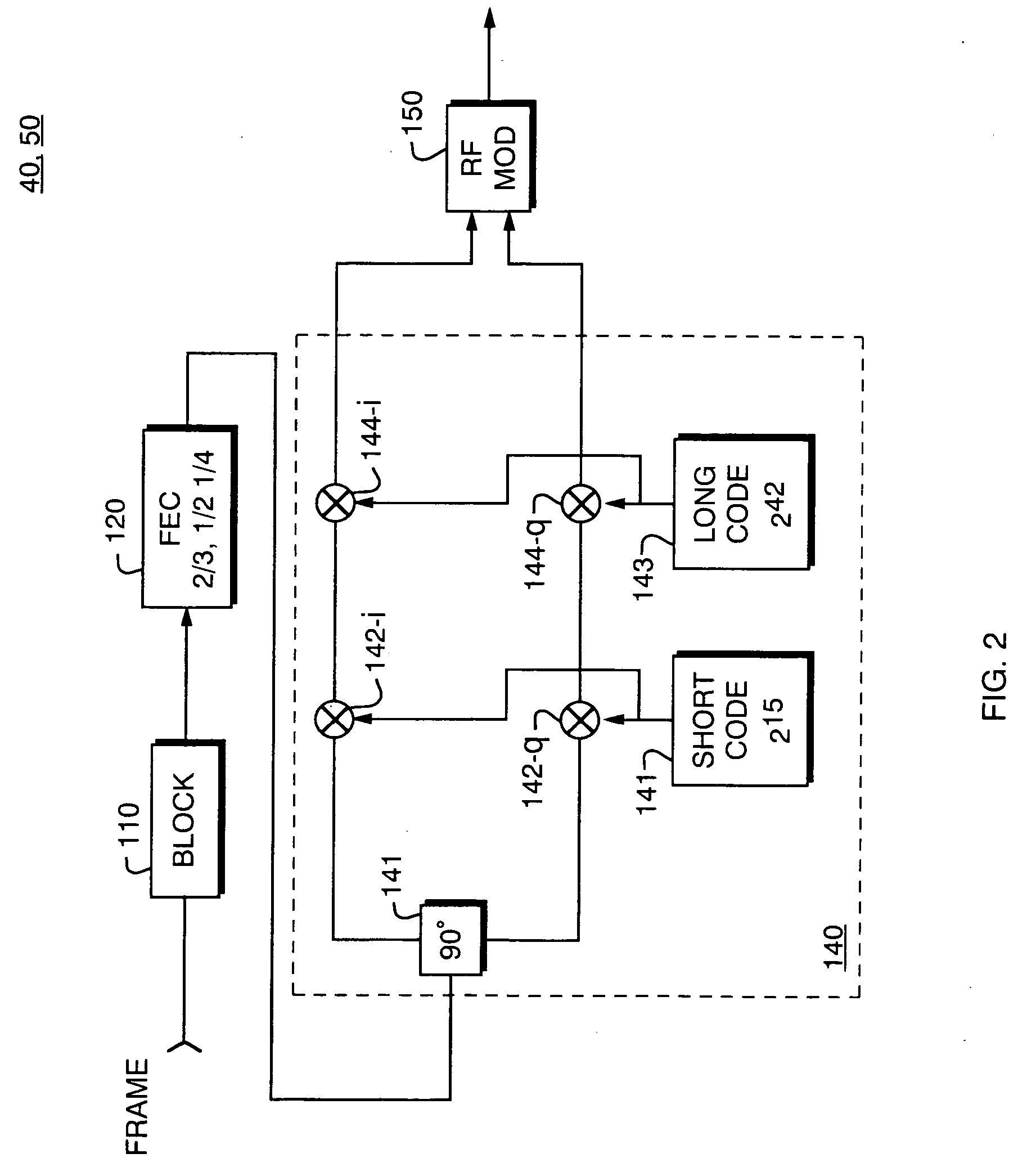Fast switching of forward link in wireless system
a wireless system and forward link technology, applied in the field of wireless communication systems, can solve the problems that traditional wireless system architectures and protocols, such as those used in cellular telephone systems, were not designed with the goal of rapid channel change, and achieve the effects of fine time scale, precise and rapid control, and great flexibility in capacity managemen
- Summary
- Abstract
- Description
- Claims
- Application Information
AI Technical Summary
Benefits of technology
Problems solved by technology
Method used
Image
Examples
Embodiment Construction
[0027]FIG. 1 is a block diagram of a wireless communication system 10 that makes use of a code channel assignment scheme and message protocol where, prior to the start of each code epoch, a paging channel message is sent that indicates terminal unit identifiers and active channels for such epoch.
[0028] In the following detailed description of a preferred embodiment, the communication system 10 is described such that the shared channel resource is a wireless or radio channel. However, it should be understood that the techniques described here can be applied to allow shared access to other types of media such as telephone connections, computer network connections, cable connections, and other physical media to which access is granted on a demand driven basis.
[0029] The communication system 10 includes a number of Personal Computer (PC) devices 12-1, 12-2, . . . 12-h, . . . 12-1, corresponding remote, mobile Subscriber Access Units (SAUs) 14-1, 14-2, . . . 14-h, . . . 14-1, and assoc...
PUM
 Login to View More
Login to View More Abstract
Description
Claims
Application Information
 Login to View More
Login to View More - R&D
- Intellectual Property
- Life Sciences
- Materials
- Tech Scout
- Unparalleled Data Quality
- Higher Quality Content
- 60% Fewer Hallucinations
Browse by: Latest US Patents, China's latest patents, Technical Efficacy Thesaurus, Application Domain, Technology Topic, Popular Technical Reports.
© 2025 PatSnap. All rights reserved.Legal|Privacy policy|Modern Slavery Act Transparency Statement|Sitemap|About US| Contact US: help@patsnap.com



